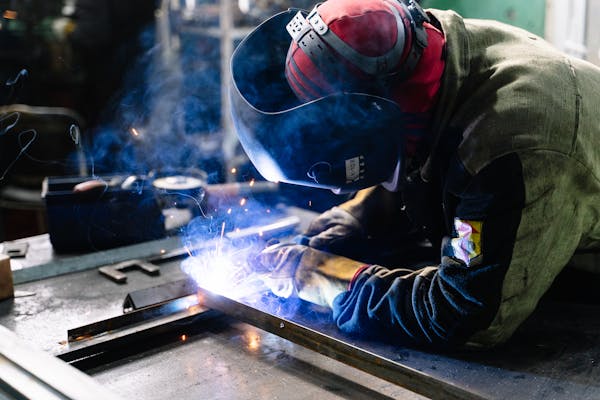
What is Cobot Welding?
Cobot welding is the use of collaborative robots (cobots) to automate certain welding processes. Cobots are typically made up of a welding table, cart, or magnetic mount rigged with a robotic arm, welding tools, power source, cooling system, and a way to program the robot. This type of automation has been applied to a variety of industries, including automotive, aerospace, and electronics.Benefits of Cobot Welding
Cobot welding offers a number of benefits compared to traditional manual welding, including improved quality, increased productivity, increased efficiency, and improved safety. By replacing human workers with cobots, companies are able to save money and increase output. Additionally, cobots are cheaper than traditional industrial robots, require no enclosures, and have less requirements for manufacturing space.How Do My Welders Work with a Cobot?
Cobots do not replace human welders, but instead act as an assistant. Experienced welders are still needed to “train” (program) the cobot and to ensure the quality of the final welds. Welders are only required to spend a short amount of time setting up the cobot, and can then concentrate on more complicated welding tasks while the cobot handles the simpler tasks. For many cobots, such as the SmoothTool Cobot Welding package, operators can use a programming flange to manually move the robotic arm during programming, allowing them to teach the cobot what to do without any need for programming.Why Should I Invest in a Welding Cobot?
The welder shortage is not going away anytime soon, making cobot welding a viable option for companies looking to increase their output and save money. Additionally, cobots can be programmed to consistently produce the same quality welds no matter how long they are running, and can take on the more repetitive tasks that human welders usually have to handle. By freeing up welders to focus on more complicated welding tasks, companies can increase their overall efficiency and production.Costs
Cobots are much cheaper than traditional industrial robots, require no enclosures, and have less requirements for manufacturing space. Additionally, the programming flange included with the SmoothTool Cobot Welding package allows operators to manually move the robotic arm during programming, allowing them to teach the cobot what to do without any need for programming.Conclusion
Cobot welding offers a number of benefits over traditional manual welding, including improved quality, increased productivity, increased efficiency, and improved safety. Additionally, cobots are cheaper than traditional industrial robots, require no enclosures, and have less requirements for manufacturing space. By freeing up welders to focus on more complicated welding tasks, companies can increase their overall efficiency and production.References
- https://www.smooth-tech.com/en/en_welding_cobot_package.html - https://www.thefabricator.com/article/robots/cobots-for-welding-understanding-the-basics - https://www.robotics.org/content-detail.cfm/Industrial-Robotics-News/Cobots-in-Welding/content_id/7461Additional References: https://www.nexair.com/robotic-welding-solutions/
0 Comments:
Post a Comment
Note: Only a member of this blog may post a comment.